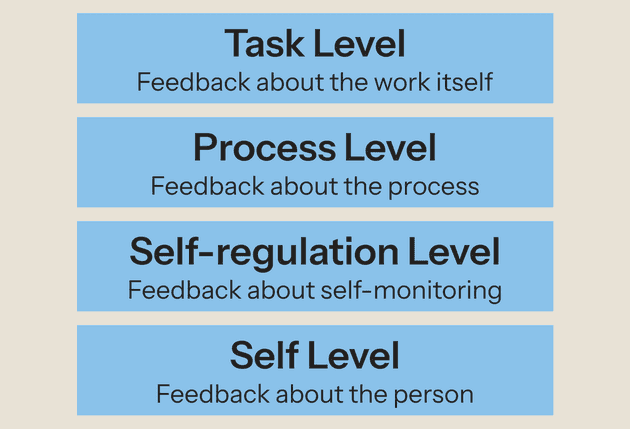Feedback falls into four types: task, process, self-regulation, and self. The closer the feedback is to the work itself, the stronger its effect. Therefore, self-feedback is usually least useful for learning outcomes.
Paper: The Power of Feedback - John Hattie, Helen Timperley, 2007
Not all feedback helps students in the same way. John Hattie and Helen Timperley proposed four levels of feedback, each with different effects on learning.
The first level is task feedback. This is information about correctness. For example, a teacher might say, "You need to include more detail about the WW2." for a writing assignment. Task feedback helps students fix mistakes, but often stays tied to the specific question. It is powerful when it points out errors in interpretation, but it rarely transfers to new problems. It explains why skills like poker are hard to transfer in other domain.
The second level is process feedback. Here, the teacher draws attention to strategies and approaches. For instance, "This essay may make more sense if you use the structure we practiced." This kind of feedback pushes students to think about how they are working, not just what they produced.
The third level is self-regulation feedback. This helps students monitor their own progress, build confidence, and develop habits of checking their work. An example might be, "You already know the features of a strong introduction. Check if your first paragraph includes them." This feedback improves self-efficacy and supports autonomy.
The last level is self feedback. Statements like "You are smart" or "Good job" focus on the person rather than the work. Praise of this type feels nice but adds little to learning. Studies show it rarely leads to real improvement because it carries little information that provides answers to any of the three questions good feedback should be able to answer (Where am I going, how am I going, and where to next).
The most effective pattern is to guide students from task feedback to process and then to self-regulation. This sequence helps them not only correct errors but also grow into independent learners.
